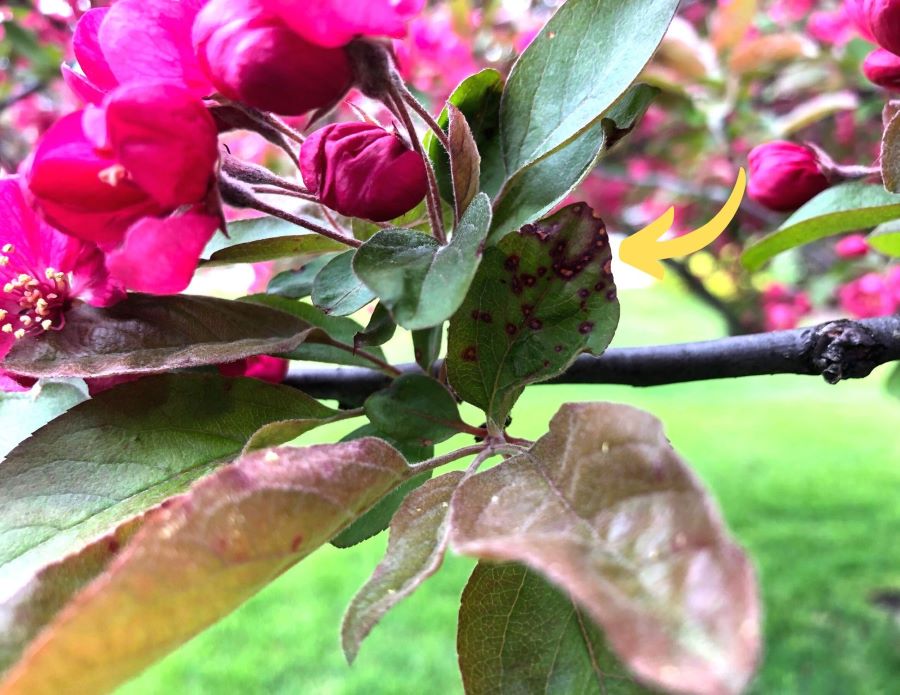Eco Tree Company
TREE DISEASE
DIAGNOSIS & TREATMENT
We know the best way to keep your trees healthy is to treat any disease while building the natural immune systems of the plants. Contact us for proper treatment.
We know the best way to keep your trees healthy is to treat any disease while building the natural immune systems of the plants. Contact us for proper treatment.
Oak Wilt is caused by a fungus (Ceratocystis fagacearum) that affects nearly all species of oaks and is particularly aggressive when contracted by Red Oaks. This disease is a major problem in the eastern and central United States, including the greater Madison area and all of southern Wisconsin.
The Oak Wilt fungus kills the tree by infecting the vascular system (xylem). This elicits an immune response from the tree which then begins to plug the “tubes” in the xylem in a attempt to stop spreading the disease. This stops the flow of nutrients and water and results in either tree death in the red oak subgenus, or dead branches in the white oak subgenus.


Emerald Ash Borer (EAB) is an aggressive wood borer that attacks and kills all species of ash. Native Ash in the United States and Canada has no natural defenses to this invasive borer. Although stressed trees are typically more prone to borer attack, the Emerald Ash Borer can kill both healthy and stressed trees. Infested trees die due to extensive feeding on the vascular system of the Ash trees.
In North America, the Emerald Ash Borer was first discovered near Detroit, Michigan in 2002 and has since spread across the U.S. to 28 different states, including Wisconsin (2008).
Apple Scab, also known as Scab Disease, is a fungal disease that can pose a serious threat to ornamental and fruit trees belonging to the rose family. Among the most commonly and severely affected trees are Apple, Pear, Crabapple, Hawthorn, and Mountain Ash. The disease tends to be most severe during periods of cool, damp weather.


Two-lined chestnut borer (Agrilus bilineatus), is an insect that attacks oaks, beech, hornbeam and chestnuts. Generally these trees are stressed by drought, compacted soils or other insects or diseases, as the borer takes advantage of compromised trees mostly easily. Trees may be killed in the first year of attack but in most cases death usually occurs after 2 to 3 successive years of heavy infestation. Typically, the crown is attacked during the first year, while the remaining portions of the branches and trunk are infested during the second and third years.
The adult bronze birch borer (Agrilus anxius) is a slender, dark bronze beetle, with a radiant green iridescence underneath the wing. This native insect is a serious pest of any stressed birch tree (Betula species), but is most commonly found attacking the ornamental White Birch that are so common in our neighborhoods. If not treated properly, the bronze birch borer will continue to lay eggs and feed on the vascular tissue of the Birch tree until the tree can no longer sustain the damage and succumbs to the invader.


Japanese beetle (Popillia japonica) was first discovered in southern New Jersey in 1916. Since then, Japanese beetles have spread to every state east of the Mississippi River, except Florida. Japanese beetle adults are slightly less than 1/2 inch long, and are shiny, metallic green with coppery-brown wing covers.
When a tree is showing chlorotic symptoms this means the foliage is unable to produce chlorophyll effectively.
A tree is considered chlorotic when the leaves turn partially or completely yellow or pale green with darker green veins. This may occur on a single branch or a large portion of the canopy, depending on severity. Many factors contribute to chlorosis.


In Wisconsin and the U.S. we’ve been fighting an uphill battle since Dutch Elm Disease disease was introduced in the 1930s. Dutch Elm Disease (DED) is caused by a fungus called Ophiostoma ulmi. The American elm, Ulmus americana, is extremely susceptible to Dutch Elm along with all European elms.
Since the 30’s we have lost hundreds of thousands of elm trees across their native range. These majestic giants of our urban canopy went from being a dominant tree along our streets, parks and homes to being a rare specimen. The few large survivors we have deserve a high level of care to preserve and protect them.
Rhizosphaera needle cast is caused by the fungus, Rhizosphaera kalkhoffii.
The disease causes death and casting (dropping) of needles in Spruces. It most commonly affects Colorado Blue Spruce but can infect other Spruce species.

We can have one of our Madison certified arborists come out to your home and assess your trees. Whether it is in need of removal, maintenance, or you think it has a tree disease, we have you covered! Schedule a consultation below!
You’re invited to immerse yourself into Spring with an enchanting evening at the UW-Madison Arboretum! Perfect for families and nature lovers alike, this event promises an array of activities that blend fun, education, and community spirit. RSVP today while availability lasts!